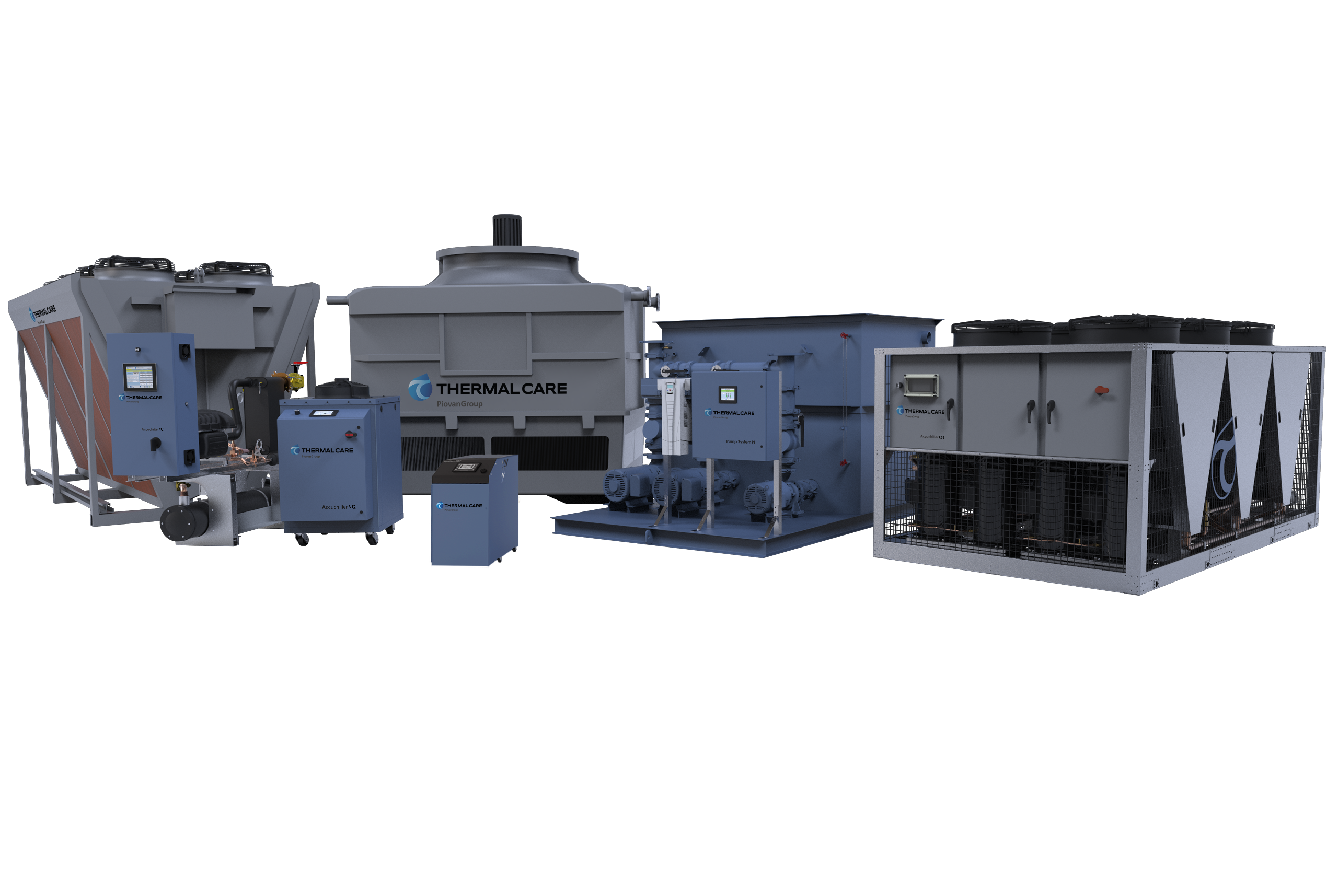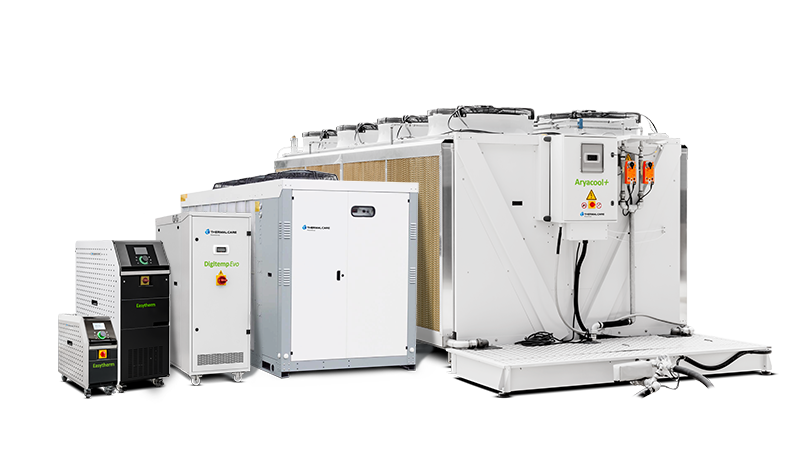Glycol Chillers Prep Guide
What to expect when you purchase a glycol chiller
Setting up your own brewery operation can be a daunting task. One product that is often overlooked but plays an important role in brewing is purchasing a glycol chiller. Which type of cooling equipment is correct for your application? Count on Thermal Care application specialists to understand your process and help you find the right chiller for your specific needs to help minimize investment and ongoing energy costs. Thermal Care will support you through each step of this process with over 50 years of experience as an equipment manufacturer to help guide you.
This guide explains what to expect when your purchase a chiller.




Communication and Scheduling
After purchasing the glycol chiller for your new brewery, it is easy to focus on the many other items on your to-do list. It is important to note that before receiving your chiller, you will need to prepare your facility. By preparing for the chiller's arrival, you will be ready to start brewing as quickly as possible.
After we receive your order, we schedule the job in our production system. This system confirms the planned ship date which we send to you on our formal order acknowledgement. Throughout the process, we monitor the status of each job in production. We review them on a daily basis. If any issues arise that impact your glycol chiller, we will notify you and immediately work to eliminate delays. Thermal Care maintains a proactive philosophy to achieve our on-time shipments goal.
Keeping two-way communication for site readiness is also important. Thermal Care will accommodate, whenever possible, for site delays by holding shipment, but we do not always have the space to store the unit. Staying on top of the site’s readiness will ensure you are able to receive the shipment when available. The impact on warranty coverage also is a consideration because typically warranty begins at time of shipment.
Shipping
Thermal Care’s experienced order entry team will confirm the shipping details for your glycol chiller to ensure you are aware of shipping charges and payment. New breweries without prior logistics experience can rely on Thermal Care to assist throughout the process. There are two methods of shipment that are most common: prepaid and collect. For prepaid, Thermal Care will coordinate the freight carrier to pick up the equipment and pay the freight bill. This cost will be added to the invoice for your order. For collect, you can select the carrier and they will bill you directly.
Receiving and Inspecting
The chiller will arrive on a skid, with a box or crating for added protection. Please alert your Thermal Care team if your location does not have a shipping dock. Companies without a shipping dock require a truck with a lift gate to unload the truck using a pallet jack.
Once the chiller is unloaded, be sure to fully inspect the crating. Identify any damage, photograph it and note it on the delivery receipt. As the glycol chiller is uncrated, carefully inspect for any concealed damage that occurred during shipment. Proper documentation is critical to provide evidence the damage did not occur after delivery.
Chiller Location
Prior to receiving your chiller, consider the location for the unit. This allows you to place the glycol chiller at the time of delivery especially if you have rented or borrowed moving equipment.
After uncrating the chiller you will need to determine how to move it into position. Some units have casters that allow them to roll. Others, often units for outdoor installation, have feet for mounting. You will require a forklift or pallet jack.
Standard chillers are designed for indoor installation but outdoor duty construction is a common option. If the chiller will be installed outdoors, consider the security of the unit to avoid any possible theft or damage. Fencing around the chiller is most common, but be sure the fence isn’t too close to restrict airflow. Also, you may need to pour a concrete pad or install a metal support frame. These should be constructed prior to the chiller’s arrival; so it can be moved into place at time of delivery.
Airflow is crucial for a glycol chiller’s operation. The exhaust air from the chiller is how it removes the heat from the system. It cannot be installed in a confined place or in a corner. Proper clearance around the chiller ensures airflow but also allows for maintenance access. To ensure proper airflow and space for maintenance allow a minimum of 36 inches of clearance between the sides of the equipment and any walls or obstructions. You may also want to avoid locating it near customers or seating areas due to the noise level of a chiller.
Electrical and Mechanical Installation
The ideal location for your chiller is near your tanks. Using properly sized piping to minimize restrictions and reducing the number of fittings will ensure your glycol system maintains the required pressure. There are various methods used for this including “reverse return piping” also known as “first in, last out.” This design balances the flow distribution to each tank. For all systems, we recommend a valved bypass at the end of the line. This prevents possible equipment damage if flow is shutoff at all usage points. If the system piping will be routed overhead, review the solutions in our operations manual to prevent backflow when the system is shutdown.
Your glycol chiller is designed for a particular electrical supply and will need to match your facility’s available service. When placing your order your Thermal Care sales team will confirm the voltage required. Industrial electricians will provide the proper wiring, disconnects and safety equipment for the chiller based upon local codes. Thermal Care’s engineering team provides all necessary information and drawings for professional installation.
Starting Your Chiller
Each Thermal Care packaged chiller is individually reviewed as part of a quality inspection and fully tested prior to shipment. Having your installation contractor onsite during startup is recommended in case there are any piping leaks or troubleshooting required for the chiller. Thermal Care’s dedicated Service team is also available to support you throughout this process.
Most glycol chillers operate near 25°F setpoint to ensure proper cooling for various stages of brewing. At this temperature, a glycol mixture is required to protect from freezing. Use food grade propylene glycol to avoid complications created by toxic varieties of glycol. Thermal Care recommends a 30-50% mixture based upon your individual application. Pre-mixed formulas are available or you can mix your own and check the concentration with a refractometer.
Chiller Maintenance
After the chiller is in service, it is important to have a properly established preventive maintenance program. Follow a maintenance schedule to reduce potential downtime, minimize repair costs, and extend the useful life of the chiller. Refer to the Preventive Maintenance Checklist included in the Operation, Installation, and Maintenance Manual for a recommended schedule. There are still Thermal Care chillers in operation that are over 50 years old because they have proper, regular maintenance.
Like any other piece of machinery, there will be times that the chiller requires service. To be prepared for this situation, we recommend establishing communication with a local refrigeration contractor. Contact Thermal Care for suggested contractors in your area if needed.
Thermal Care is here to support you throughout your glycol chiller design, selection, installation, and operation. Please contact the experts in our Industrial Markets Group to learn how we can help you with a successful brewery operation.




